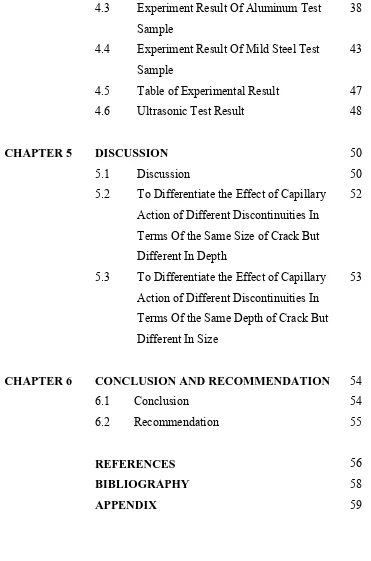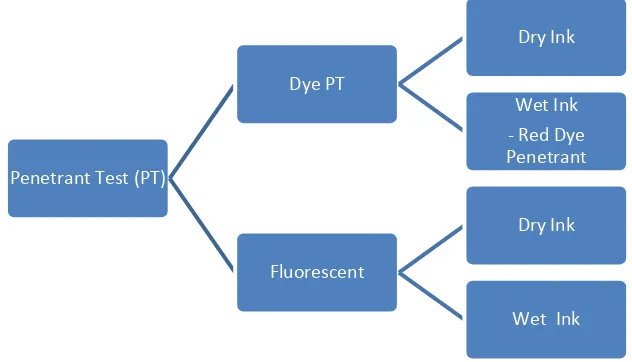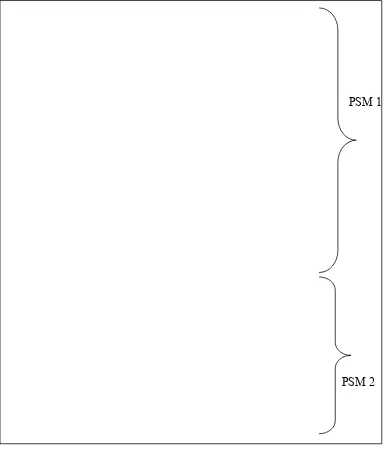karya ini dan pada pandangan saya / kami karya ini
adalah memadai dari segi skop dan kualiti untuk tujuan penganugerahan Ijazah Sarjana Muda Kejuruteraan Mekanikal (Automotif)
Tandatangan : Nama penyelia I :
Tarikh :
Tandatangan : Nama penyelia II :
AHMAD GHAZALI BIN ZULCEFLI MUHAMMAD
Laporan ini dikemukakan sebagai memenuhi syarat sebahagian daripada syarat penganugerahan Ijazah Sarjana Muda Kejuruteraan Mekanikal (Automotif)
Fakulti Kejuruteraan Mekanikal Universiti Teknikal Malaysia Melaka
“Saya akui laporan ini adalah hasil kerja saya sendiri kecuali ringkasan dan petikan yang tiap-tiap satunya saya telah jelaskan sumbernya”
Tandatangan : Nama Penulis :
ACKNOWLEDGEMENT
Alhamdulillah. Greatest thanks to Allah Almighty for His blessings and giving me the ability to finish this project, hopefully can contribute in further research.
I would like to express my gratitude and appreciation to my respectful lecturer supervisor, Mrs. Zakiah bt. Abd Halim for her supervision, invaluable advice and inspiring encouragement in guiding me in completing this research.
Further acknowledgements also to all lecturers and technicians at Faculty of Mechanical Engineering at UTeM for their technical support and help during the completion of this work and last but not least, I would like to express my gratitude and affection to my beloved family and friends for their unconditional support and smile during developing the original version of this style document. Not forgotten, En.rizal as the technician from NDT lab, En.Raduan as technician from AMC lab and En. Fauzi from EMD lab of Faculty of Manufacturing Engineering.
ABSTRACT
ABSTRAK
Kajian yang dibuat adalah berdasarkan kajian mengenai kesan kapilari di dalam
Penetrant Test dan membezakan kesan daripada fenomena kapilari terhadap perbezaan
saiz bagi setiap retakan pada permukaan sampel ujian. Merujuk kepada kajian ilmiah, kajian mengenai kesan kapilari masih tidak lengkap sepenuhnya. Penetrant Test adalah sebahagian daripada ujian yang terkandung di dalam Makmal Ujian Tanpa Musnah dan digunakan secara meluas untuk mengesan retakan pada permukaan sampel tanpa memusnahkannya. Sampel ujian di reka dengan menggunakan perisian CATIAV5R16 dan akan dihasilkan dengan menggunakan mesin Advance CNC Wire Cut EDM
Machine. Berkaitan dengan eksperimen menggunakan Pengujian Ketembusan,
TABLE OF CONTENT
CHAPTER INDEX PAGE
ACKNOWLEDGEMENTS і
ABSTRACT іі
ABSTRAK ііі
TABLE OF CONTENT іv
LIST OF TABLE vіi
LIST OF FIGURE vііi
LIST OF APPENDIX xii
CHAPTER 1 INTRODUCTION 1
1.1 Project Background 1
1.2 Problem Statement 4
1.3 Project Objective 5
1.4 Scope 5
1.5 Project Flow 6
CHAPTER 2 LITERATURE REVIEW 7
2.1 An overview of Penetrant Test 7
2.2 Penetrant Test Principles 9
2.3 Application of Penetrant Liquid 11
2.4 Quality Control 14
CHAPTER INDEX PAGE
CHAPTER 3 METHODOLOGY 18
3.1 Gathering Information and Related References
18
3.1.1 Material Used 19
3.1.2 Research through Literature Review
20
3.1.3 Research through the Previous Design
21
3.2 Knowing the Case Problem Source
21
3.3 Suggestion Due To Solve The Problem
22
3.4 Specification Planning For The Test Sample
23
3.5 Design Process And Analysis 24
3.6 Fabricate Test Specimen 28
3.7 Dye Penetrant Testing 31
3.7.1 Equipment 32
3.7.2 Red Dye Penetrant Testing Procedure
33
3.8 Parameter of Study 34
3.8.1 Experiment 1 35
3.8.2 Experiment 2 35
CHAPTER 4 RESULT 37
4.1 Result 37
4.3 Experiment Result Of Aluminum Test Sample
38
4.4 Experiment Result Of Mild Steel Test Sample
43
4.5 Table of Experimental Result 47
4.6 Ultrasonic Test Result 48
CHAPTER 5 DISCUSSION 50
5.1 5.2
5.3
Discussion
To Differentiate the Effect of Capillary Action of Different Discontinuities In Terms Of the Same Size of Crack But Different In Depth
To Differentiate the Effect of Capillary Action of Different Discontinuities In Terms Of the Same Depth of Crack But Different In Size
50 52
53
CHAPTER 6 CONCLUSION AND RECOMMENDATION 54
6.1 Conclusion 54
6.2 Recommendation 55
REFERENCES 56
BIBLIOGRAPHY 58
[image:9.612.109.480.70.631.2]LIST OF TABLE
NUMBER TITLE PAGE
3.1 Material Properties for Mild Steel 19
3.2 Material Properties for Aluminum 20
3.3 General Technical Specification of Advance 3-axis CNC Wire Cut EDM Machine [14]
30
3.4 To Investigate the Capillary Action for Crack 3 and 4 35
3.5 To Investigate the Capillary Action for Crack 2 and 4 36
4.1 Result Of Experimental Developer Time For The Aluminum Using The PT.
47
4.2
5.1
5.2
Result Of Experimental Developer Time For The Mild Steel Using The PT.
The Result Gained from Experiment 1 Mild Steel
The Result Gained from Experiment 2 Mild Steel
48
52
LIST OF FIGURE
NUMBER TITLE PAGE
1.1 Types of Penetrant Test 2
1.2 Red Dye Penetrant Testing Material 3
1.3 Flow Chart of PSM 1 & PSM 2 4
2.1 Penetrant Test Material Is Sprayed On the Test Sample 8
2.2 Example of Dye Penetrant Testing Chemicals 9
2.3 The Steps of Penetrant Test 10
2.4 Objects be wiped or sprayed with penetrant 11
2.5 Color Penetrant 12
2.6 Fluorescent Penetrant 13
2.7 Structure of Quality Control Department 14
2.8 Dependence of relative viscosity of penetrants N µ (R) / µN on the capillary radius: 1 - P2, 2 - P3, 3 - P1.[11]
16
2.9 Capillary Phenomena [12, 13] 17
3.2 The First Test Sample Design 24
3.3 The Second Test Sample Design and Its Casing 25
3.4 (a) Right View of Final Design for PT Test Sample 26
3.4 (b) Front View of Final Design for PT Test Sample 26
3.4 (c) Main Dimension of Final Design for PT Test Sample 27
3.4 (d) Isometric View of Final Design for PT Test Sample 28
3.5 Advance CNC Wire Cut EDM Machine[14] 29
3.6 The PT test sample aluminum (left) and mild steel (right) after the fabrication process is complete.
31
3.7 (a) The Equipment to running the PT Experiment 32
3.7 (b) Material of the Red Dye Penetrant 33
4.1 (a),(b),(c),(d),(e),(f) is the crack detection at the test sample aluminum from crack one
40
4.2 (a),(b),(c),(d),(e),(f) is the crack detection at the test sample aluminum from crack two
41
4.3 (a),(b),(c),(d),(e),(f) is the crack detection at the test sample aluminum from crack three
4.4 (a),(b),(c),(d),(e),(f) is the crack detection at the test sample aluminum from crack four
42
4.5 (a),(b),(c),(d),(e),(f) is the crack detection at the test sample aluminum from crack five
43
4.6 (a),(b),(c),(d),(e),(f) is the crack detection at the test sample aluminum from crack six
43
4.7 (a),(b),(c),(d),(e),(f) is the crack detection at the test sample mild steel from crack one
44
4.8 (a),(b),(c),(d),(e),(f) is the crack detection at the test sample mild steel from crack two
44
4.9 (a),(b),(c),(d),(e),(f) is the crack detection at the test sample mild steel from crack three
45
4.10 (a),(b),(c),(d),(e),(f) is the crack detection at the test sample mild steel from crack four
45
4.11 (a),(b),(c),(d),(e),(f) is the crack detection at the test sample mild steel from crack five
46
4.12 (a),(b),(c),(d),(e),(f) is the crack detection at the test sample mild steel from crack six
46
4.13 (a) The UT result of the crack number six 49
5.1 (a),(b),(c): The result for aluminum test sample for crack five
51
5.2 (a),(b),(c): The result for Mild Steel test sample for crack five
LIST OF APPENDIX
NUMBER TITLE PAGE
1. Example of dye penetrant test material 67
2. Typical dye penetrant (PT) indications of true flaws in different materials.
67
3 Advance 3-Axis CNC Wire Cut EDM Machine At FKP 68
4 Example of Dye Penetrant Test Samples Kit 68
5 Equipment for Ultrasonic Testing used in FKM 69
6 Standard ASTM used in NDT 69
7 CNC program code for fabricates crack on test sample used to operates Advance 3-Axis CNC Wire Cut EDM Machine at FKP
70
8 Example of penetrant application 72
CHAPTER I
INTRODUCTION
1.1 Project Background
NDT is divided into various methods of nondestructive testing, each testing are different in terms of particular scientific principle. These methods may be further subdivided into various techniques. The various methods and techniques, due to their particular natures, may lend themselves especially well to certain applications and be of little or no value at all in other applications. For example, the ultrasonic testing are only can be used in findings a crack at the test subject within 25% of the thickness of test subject. Therefore choosing the right method and technique is an important part of the performance of NDT. Some of the techniques are Penetrant Test , Radiographic Testing (RT), Impulse Excitation Technique (IET), Ultrasonic Testing (UT), Electromagnetic Testing (ET), Acoustic Emission Testing (AE), Positive Material Identification (PMI), Hardness Testing (Brinell) (HT), Infrared and thermal testing (IR).
[image:17.612.151.467.424.605.2]The various method and techniques of NDT cost lots of money. However, the easiest and cheapest NDT method available is PT. PT is used because of its low cost, simple, easy to get and widely used in industry. Moreover, the equipment needed for this PT just a simple kind of chemical stored in a spray can and makes the PT are easy to be used.
Figure 1.1: Types of Penetrant Test
There are two types of Penetrant Test which are dye penetrant testing and fluorescent penetrant testing as shows at Figure 1.1 above. Dye penetrant testing which
Penetrant Test (PT)
Dye PT
Dry Ink
Wet Ink
- Red Dye Penetrant
Fluorescent
Dry Ink
is very simple to use, supplied in aerosol and particularly suitable for field work as no UV lighting is needed as shown in Figure 1.2 below. According to these Projek Sarjana Muda (PSM) project objectives, the PT that will be use is red dye penetrant testing. Furthermore, this test is the testing that can easily get the result of the project objectives target which is to find out and to investigate the effect of capillary in PT and differentiate the effect of capillary action of different discontinuities in terms of crack size and depth.
Figure 1.2: Red Dye Penetrant Testing Material
The effect of capillary in PT can be seen in the sensitivity of the penetrant material used. For more sensitivities materials (Fluorescent), the flow conditions are greater to small defects. Also for the liquid penetrant testing, it still applied the capillary action principal to locate surface-breaking defects. For the other views, capillary action happens when there are some result of adhesion and surface tension.
In the capillary principals used in the PT, by referring to Wikipedia, the free encyclopedia “Capillary action, capillarity, capillary motion, or wicking is the ability of a substance to draw another substance into it. The standard reference is to a tube in plants but can be seen readily with porous paper. It occurs when the adhesive intermolecular forces between the liquid and a substance are stronger than the cohesive intermolecular forces inside the liquid” [1].
The capillary action, are also known as capillarity, can be referred to the force of intermolecular attraction within the liquid and solid material. The easiest example for this phenomenon is the tendency of a dry tissue paper to absorb a liquid by drawing into the narrow openings between the fibers in the tissue.
1.2 Problem Statement
1.3 Project Objectives
The objective of this project is to investigate the effect of capillarity in PT and differentiate the effect of capillary action of different size of discontinuities. In terms of different size of crack, there will be two kind of outcome needed which crack with the difference size but same depth and the crack with the different depth but with same size.
1.4 Project Scope
1.5 Project Flow
Figure 1.3 below shows that the project flows of PSM 1 and PSM 2. In the PSM 1 project, it’s covered from topic selection and project proposal to test sample design. Starting the PSM 2 project, it will continue from fabricate of the test sample until final presentation and the submission of the hard cover report.
Figure 1.3: Flow Chart of PSM 1 & PSM 2
PSM 1
[image:21.612.135.523.220.669.2]CHAPTER II
LITERATURE REVIEW
2.1 An overview of Penetrant Test
From the other article by Wikipedia [1], penetrant test represent “Dye penetrant inspection (DPI), also called liquid penetrant inspection (LPI), is a widely applied and low-cost inspection method used to locate surface-breaking defects in all non-porous materials (metals, plastics, or ceramics). Penetrant may be applied to all non-ferrous materials, but for inspection of ferrous components magnetic-particle inspection is preferred for its subsurface detection capability[1], these can be explain by the material with rough surface are less effective than the smooth one because it will affect the PT material flows when it‟s been applied on the surface of test sample. For an example, the flow of one drop of rain through the smooth mirror and through the concrete wall will make the rain drop faster on the smooth mirror compared to the rough surface of concrete wall. These phenomena are also related to the surface tension between the rain drop and smooth mirror also for the concrete wall because of the surface tension force between rain drop and mirror are greater than the surface tension force between rain drop and the concrete wall. LPI is used to detect casting and forging defects, cracks, and leaks in new products, and fatigue cracks on in-service components [1]. Figure 2.1 below shows the way on how the penetrant being sprayed on the sample and Figure 2.2 below shows the example of consumables used to perform the PT.
Figure 2.2: Example of Dye Penetrant Testing Chemicals [4]
2.2 Penetrant Test Principles


